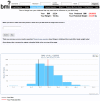Crowdsourcing novel childhood predictors of adult obesity
- PMID: 24505310
- PMCID: PMC3914836
- DOI: 10.1371/journal.pone.0087756
Crowdsourcing novel childhood predictors of adult obesity
Abstract
Effective and simple screening tools are needed to detect behaviors that are established early in life and have a significant influence on weight gain later in life. Crowdsourcing could be a novel and potentially useful tool to assess childhood predictors of adult obesity. This exploratory study examined whether crowdsourcing could generate well-documented predictors in obesity research and, moreover, whether new directions for future research could be uncovered. Participants were recruited through social media to a question-generation website, on which they answered questions and were able to pose new questions that they thought could predict obesity. During the two weeks of data collection, 532 participants (62% female; age = 26.5±6.7; BMI = 29.0±7.0) registered on the website and suggested a total of 56 unique questions. Nineteen of these questions correlated with body mass index (BMI) and covered several themes identified by prior research, such as parenting styles and healthy lifestyle. More importantly, participants were able to identify potential determinants that were related to a lower BMI, but have not been the subject of extensive research, such as parents packing their children's lunch to school or talking to them about nutrition. The findings indicate that crowdsourcing can reproduce already existing hypotheses and also generate ideas that are less well documented. The crowdsourced predictors discovered in this study emphasize the importance of family interventions to fight obesity. The questions generated by participants also suggest new ways to express known predictors.
Conflict of interest statement
Figures




References
-
- Flegal KM, Carroll MD, Ogden CL, Curtin LR (2010) Prevalence and trends in obesity among US adults, 1999–2008. J Am Med Assoc 303: 235–241. - PubMed
-
- Finucane MM, Stevens GA, Cowan MJ, Danaei G, Link JK, et al. (2011) National, regional, and global trends in body-mass index since 1980: systematic analysis of health examination surveys and epidemiological studies with 960 country-years and 9·1 million participants. The Lancet 377: 557–567. - PMC - PubMed
-
- l'Allemand D, Wiegand S, Reinehr T, Muller J, Wabitsch M, et al. (2008) Cardiovascular risk in 26,008 European overweight children as established by a multicenter database. Obesity 16: 16–72-1679. - PubMed
Publication types
MeSH terms
LinkOut - more resources
Full Text Sources
Other Literature Sources
Medical

